We have come a long way as a civilization, and so have our stoves. Different types of stoves are not just a set of appliances but an essential in the Indian kitchen.
Choosing any appliance among the vast number of varieties can be a devil of a task in disguise. But choosing a stove that would adequately cater to your need can seem even more difficult.
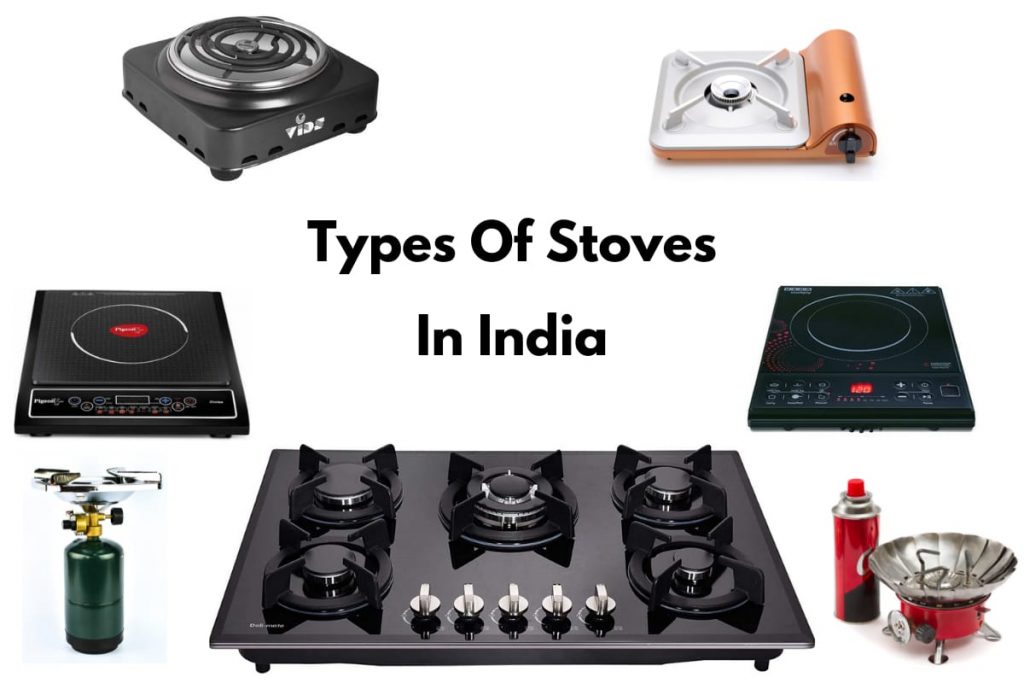
Be it stoves or bulkier hobs, operating them continually involves a certain amount of risks. So take your time to research and choose the right one for your home among the different types of stoves in India is wise and a necessity.
So if you are one of these people drowning in the numerous choices of stoves, we are here to help. In this article, we will guide you through various types of stoves that would perfectly cater to your cooking.
1. Gas Stove
Let us start with the most obvious type of stove, which is probably also the most popular one in India- the classic gas stove. A gas stove is a cooking device that uses combustible gas like natural gas, propane, butane, LPG, etc., as fuel. Gas stoves are a widespread choice in Indian kitchens because they are readily available, heat up very fast, and are easy to handle. While the older models had a higher risk of accidental ignition, the risk is significantly lower with new advanced features in gas stoves.
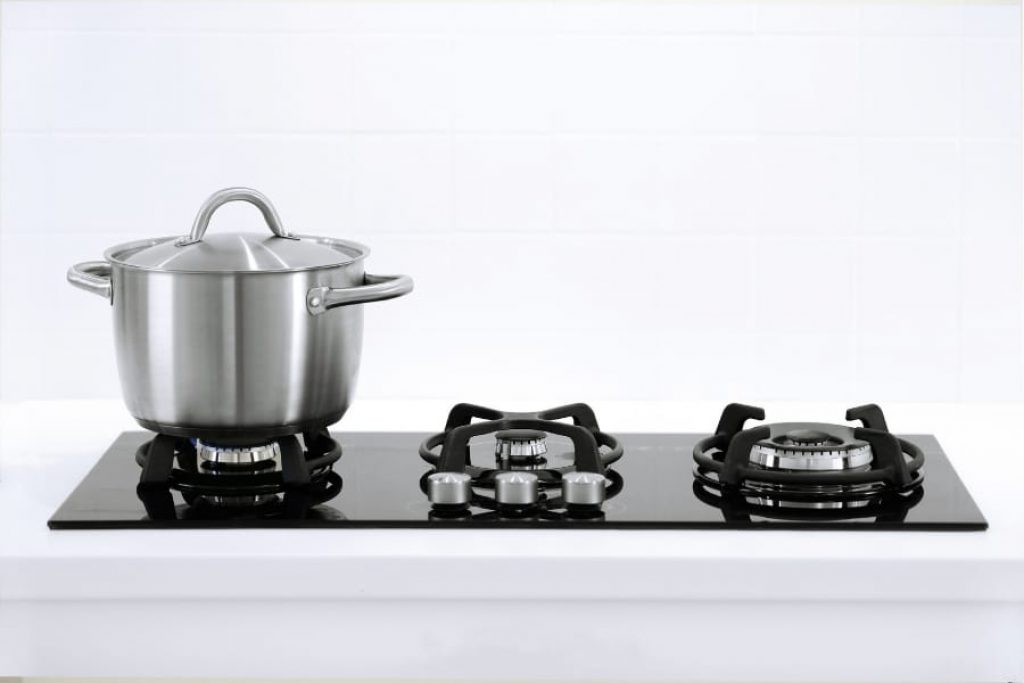
Features
- A regular gas stove is available with one, two, three, four or five burners.
- Burners with different heat outputs- high, medium, and low. Some heavy-duty burners can produce heat range as high as 20,000 BTU.
- Knobs to control the flame temperature.
- Although some gas stoves have electronic ignition, most households in India still use standing pilot ignition.
- The auto-ignition is another refined addition, making the gas stove safer. You do not have to use a spark igniter or lighter with an auto ignition gas stove. Instead, it automatically ignites after turning the knob.
- New models with programmable LCD controls make them safer and more convenient.
When should you choose a gas stove?
The pilot light of gas stoves provides consistent heat, and the user can control the flame temperature easily. Be it a delicate food item like butter or something like meat that takes more effort to cook, and you can quickly increase and decrease the flame according to your need and cook several food items at once.
Another plus of gas stoves is that the burners cool down just as fast as they heat up, reducing the risk of accidental post-cooking burns. So if you have a family of more than two people or have pets or children at home, a gas stove is the safer and more efficient option for you than the alternatives.
When should you avoid using a gas stove?
With constantly rising fuel prices in India, gas stoves are getting less cost-effective and sustainable. In such a condition, it is wiser to go for a different type of stove in India that run on electricity or other eco-friendly energy sources.
2. Induction Stove
A significantly new addition to the world of stoves, an induction stove or cooktop is primarily a cooking appliance that heats up through electromagnetic induction and does not need any external heating element. When you place ferromagnetic cookware on an induction stove, it heats up, inducing eddy current from an electromagnetic field located below the glass surface directly to the cookware. It is sleek, easy to use, involves low maintenance, and one of the safest cooking stoves available.
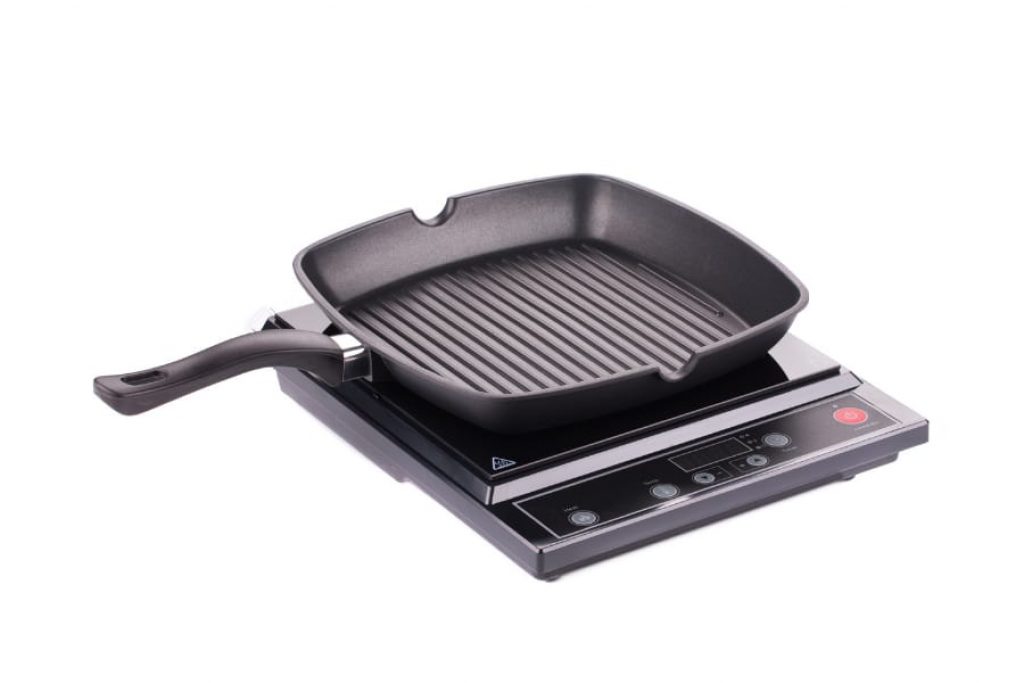
Features
- The surface top is made of tempered glass or ceramic that has low coefficients of thermal expansion.
- Digital operating control involves push buttons, touch panel or gesture control.
- Preset menu with different cooking modes like deep fry, pressure cook, saute, boil, etc.
- Internal cooling fan prevents overheating.
- Auto-pan detection feature- the heating stops once the cookware is removed.
- Heat remains restricted to one area and directly works on the cookware.
When should you choose an induction stove?
Induction stoves are easy to use and easy to clean, making them the perfect choice for students and professionals alike. These types of stoves are safe, bringing the risk of burn accidents to a minimum. Compared with the recent price hike of LPG in India, induction stoves are cost-effective. Its portability is another advantage if you move a lot or have a small kitchen.
When should you avoid an induction stove?
As induction stoves function on an electromagnetic field, people with pacemakers should avoid using them. Single element induction stoves do not accommodate more than one cookware; hence not ideal if you frequently need to cook several items.
Another point to consider is that induction stoves are only compatible with an induction base cookware. So if such cookware is not something you want to invest in, you should go for other alternatives like a gas stove or an electric stove instead of an induction cooktop.
3. Electric Stove
The electric stove is a type of stove in India that functions on an integrated electrical heating mechanism. A solid alternative to your old-school gas stoves, these advanced cooking devices are convenient, safer, and ideal for beginners and experienced cooking enthusiasts alike.
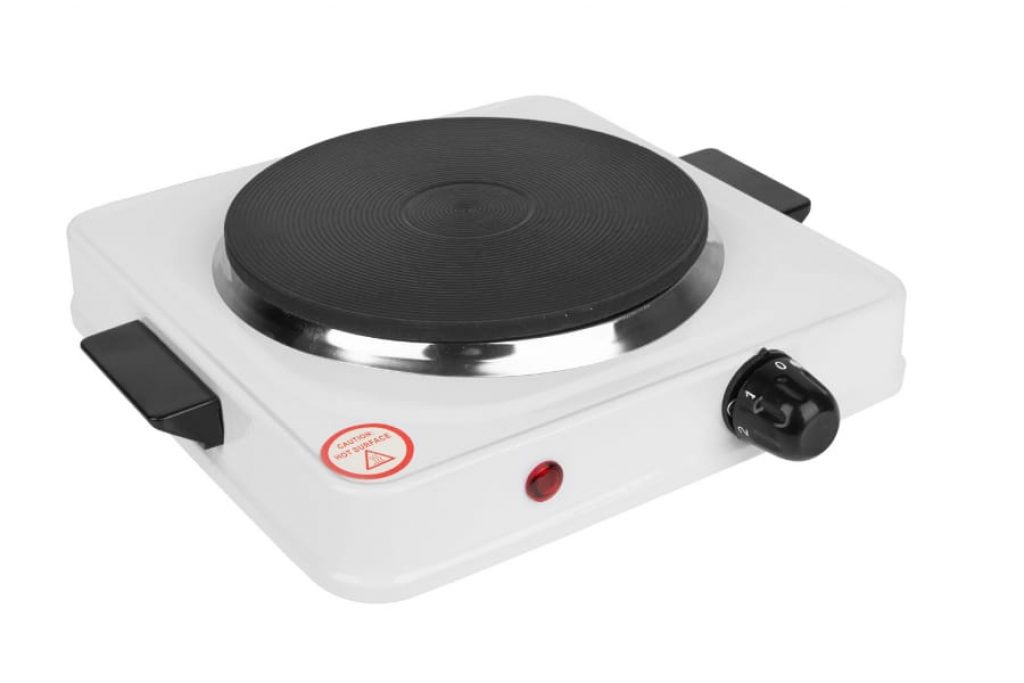
Features
- All electric stoves contain one or more heating elements, usually made of copper. When electricity is passed through the element, heat is generated which is used for cooking.
- Sleek and stylish surface. Modern electronic cooktops come with a lattice structure covering almost the whole top. This allows the user to slide the cookware from one burner to another without lifting the cookware.
- Some advanced models have additional features like child lock, steam cleaning mechanism, expandable burners, warming zone, expandable bridge zone, etc.
- Some electric stoves also have digital touch control. These control panels are more precise at heat control and are easier to clean. Glide touch control panel, allowing you to set everything in one swipe.
When should you choose an electric stove?
Electronic stoves’ slender, smooth surfaces are convenient, safe, and easy to clean. Most of these stoves have more than one heating zones that provide consistent heating throughout the cookware base. Thus cooking several items together is merely a cakewalk. The control buttons are precise and easy to use. The space between the burners doesn’t heat up, and electric stoves negate the risk of any gas leakages. So, if you are a newbie to cooking, electric stoves are ideal for you.
When should you avoid an electric stove?
Cooking on electric stoves is a little more time-consuming than on induction or gas stoves, as the temperature cannot be varied quickly. In India, where there are frequent power cuts, electric stoves are not ideal as the only cooking appliance.
4. Solar stove
The most sustainable addition to our list is the humble solar stove. Also known as the solar cooker, this device harnesses solar energy and uses it to cook food items. It turns solar energy into heat without the help of any non-fossil fuel. As our planet faces the most severe environmental crisis, these low-tech stoves are capable of playing a pivotal role in reducing the use of fossil fuels.
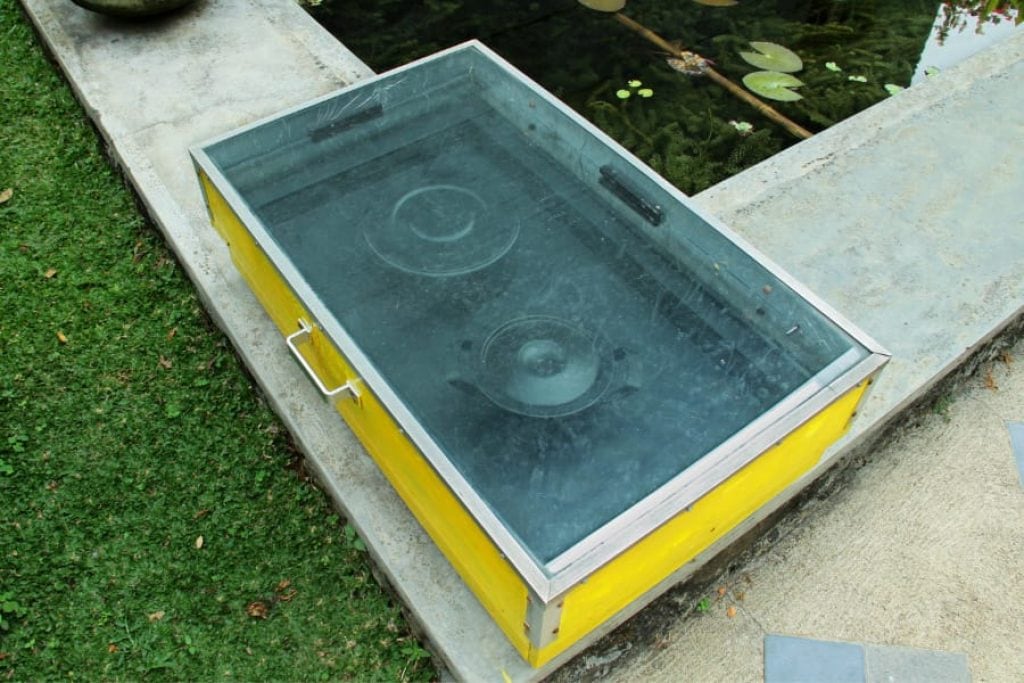
Features
- There are three basic types of solar stoves: panel cookers, box solar stoves, and parabolic solar cookers.
- The box solar stoves have insulated walls that traps the heat, the food item is placed in the middle, and the harnessed solar heat cooks the food.
- Box solar stoves generate higher heat than panel cookers. Temperatures can reach between 121°C to 204°C.
- Panel cookers turn direct sunlight into heat through strategically positioned reflective surfaces. The direct sun rays hit the shiny panels and are directed to the center of the box or the ‘heat trap’, where the cooking container is placed.
- Shaped like parabolic satellites, the dish of parabolic solar cookers is covered with reflective materials. The sunlight hits the reflective surface and is directed to the focal point. These solar stoves can generate temperatures as high as 200°C to 370°C.
When should you choose a solar stove?
If you live in a place that gets enough sun during the day, you should consider getting a solar stove. These non-expensive cooking devices are sustainable, and you don’t have to spend a penny on operating them. If you are worried about the quantity of food you will be able to cook, there are also advanced solar cookers as efficient as your traditional gas stove. As solar cookers are to be used outside, all the residual grease evaporates into the air, leaving very little for you to clean up.
When should you avoid a solar stove?
Solar stoves are not the ideal option for people living in cloudy or chilly areas or urban apartments with very little outdoor space. They are not viable when there is not enough sunlight, so an alternative cooking device like gas stove or induction cooktop is still required. While cooking simple food like egg and meat, or popping popcorn, solar stoves cannot be used to cook the intricate Indian cuisines.
5. Biomass stove
The second-best eco-friendly cooking stove after solar stoves, biomass stoves use compressed wood or biomass pellets as fuel to generate heat. As biomass is derived from organic matter, it is a sustainable and renewable energy source.
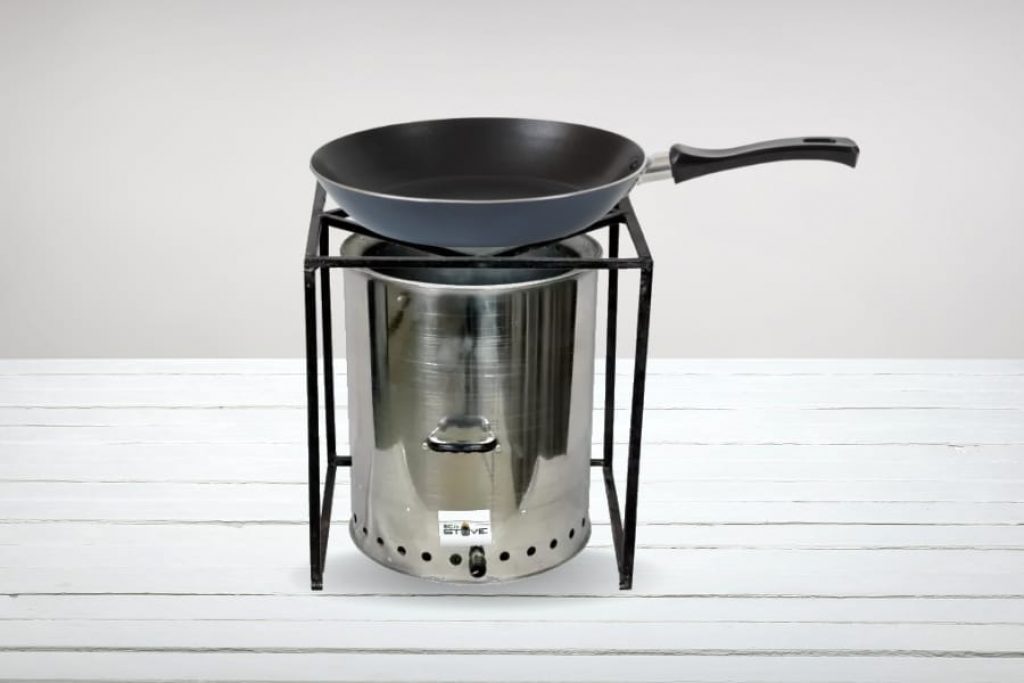
Features
- In many Indian villages, brick and mortar biomass stoves are used.
- Modern designs are typically made of steel and cast iron.
- The operation is noiseless but powerful.
- Advanced models are easy to use and come with a convenient control panel.
When should you choose a biomass stove?
Did you know biomass fuel is 50% more efficient in generating heat than the alternatives? If availing of biomass fuel is not a hassle for you, you should consider choosing a biomass stove. So it is not only a sustainable but also a practical, cost-effective choice for your kitchen. On top of that, biomass stoves can also act as a room heating device.
When should you avoid a biomass stove?
While the biomass stove is a fantastic cooking device considering its sustainability and eco-friendliness, it is not ideal for everyone. Biomass fuel is not available rampantly and can be a little heavy on the pocket, and installing it also requires considerable space. So if you don’t have nearby sources of availing biomass or live in a compact space, avoiding the biomass stove will be the better option for you.
6. Wood Burning Stove
It does what it says on the tin. A wood burning stove is a self-contained appliance that uses wood or wood-derived matters as fuel to generate heat. It is designed to create heat through wood combustion, and the mechanism relies on constant airflow in the heat-generating process.
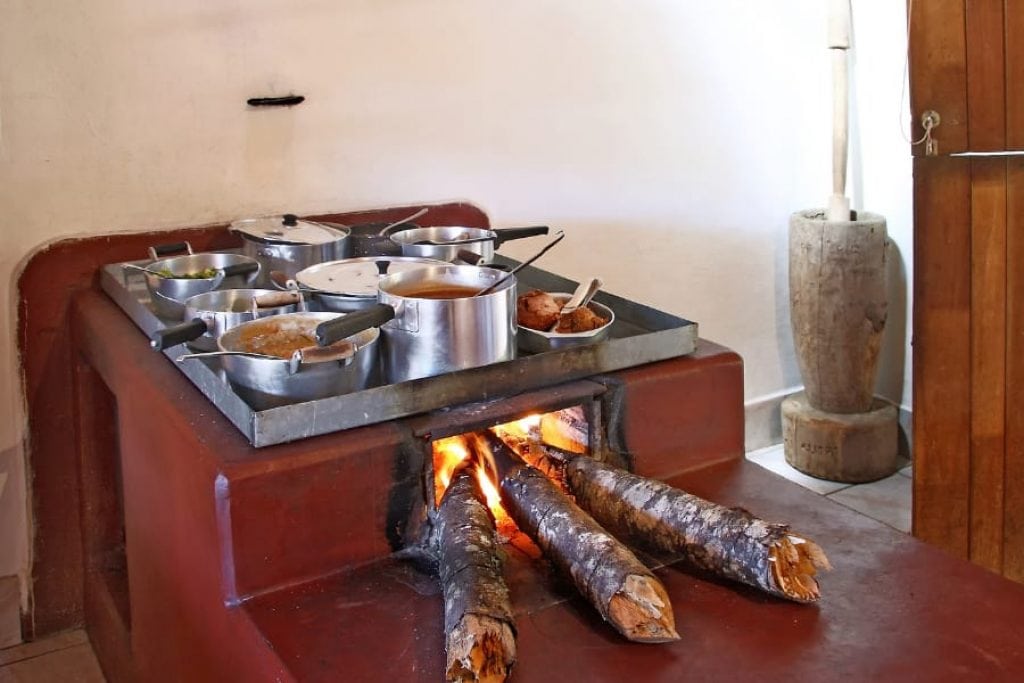
Features
- The latest designs of wood burning stoves come with a steel or cast iron body.
- Most wood burning stoves contains an ash bin for easy collection and disposal of ashes.
- Available in freestanding or fireplace insert models. While the freestanding wood burning stoves are portable, others are fixed.
- Some wood burning stoves also have thermometers to monitor the temperature.
When should you choose a wood burning stove?
If you live in a big spacious home in a colder region, have easy access to woods, and want a reliable heating device that would not make a hole in your pocket with electricity cost, wood burning stoves are ideal for you. Wood burning stoves are also ideal for outdoor picnic or camping. It’s not only a fantastic heating device but also will give your living room a very fancy look.
When should you avoid a wood burning stove?
No matter how cinematic a wood burning stove might look in your home, it is not the only option if you live in a tropical or temperate region. You will need a consistent supply of woods which is not viable for all users. Your home should also have adequate ventilation to cook with a wood burning stove. For advanced requirements, choose the other types of stoves in India.
7. Kerosene Stove
As the name conveys, a kerosene stove, also known as the paraffin stove, is a portable cooking and heating device that generates heat through kerosene combustion. It is a budget alternative to gas stoves in India.

Features
- It generally includes a hand pump. Modern models are available without the handpumps as well.
- Depending on the model, a fuel tank ranging from small to large in size is common in wick kerosene stoves.
- Advanced kerosene wick stoves can have up to 30 or 40 wicks.
- A pressurized kerosene stove typically has a fuel tank, a vapor burner, and a potholder. Pressure can be regulated through the handpump and be released by turning the small air screw located in the filler cap.
When should you choose a kerosene stove?
A kerosene stove is ideal for you if you buy and store kerosene from the government ration stores. This way, you can have a cost-effective alternative to your traditional gas stove.
Suffered many a time because of unavailability of LPG gas? A kerosene stove would be your savior in the kitchens in such situations. You can also use this type of stove if you want to save some pennies from the huge LPG costs.
When should you avoid a kerosene stove?
Operating a kerosene stove might be tricky for beginners. Kerosene stoves do not provide as much as convenience that gas stoves or induction stoves offer. It is also not the safest option if you live with children and pets.
8. Portable Camping Stove
The name gives it away. A portable camping stove is a lightweight stove specifically designed to be efficiently used to cook food outdoors while camping or hiking. There are a variety of designs available in different sizes, and various camping stoves use other solid or liquid fuels. From freestanding models to a more compact tabletop camping stove, you can choose one according to your need, and Voila! You can finally go on that much-awaited hike without worrying about carrying heavy kerosene or wood burning stoves.

Features
- The smallest models are backpacking stoves, weighing as little as 28 to 56 grams, ideal for cycle tours and backpacking. These usually have one burner.
- The bigger models are mainly designed for people traveling in cars, boats, etc. These types of camping stoves have two or three burners.
- It is also available as a more compact tabletop version and can generally be disassembled.
- Camping stoves run mostly on butane, a cheaper alternative to LPG.
When should you choose a camping stove?
What can be better than a nifty portable camping stove for the outdoorsy souls always looking for their next adventure?! A portable camping stove would be ideal for the camper cooking for only themselves or catering to a group of friends during a camping trip. While these types of stoves are mostly used in recreational camping activities, such lightweight stoves can be very useful during natural disasters.
When should you avoid a camping stove?
Camping stoves are not usable other than camping due to its lower efficiency and lesser features than gas stoves or induction cooktops.
While our ancestors had to depend on a mere open fire for cooking, you and I don’t have to face the hassle, thanks to the ever-advancing technology. We have laid the details of different types of stoves in India out for you. Now all you have to do is note down your requirements, choose the best-suited one, and go stove shopping. Cheers!


Loved reading the list of stoves. Out of those stoves, which one do you think is most energy-efficient?
Induction cooktops deliver 80-90% efficiency compared to 60% of a gas stove. Other types of stoves have even lesser energy efficiency depending on the amount of heat generation and losses. I hope this helps 🙂